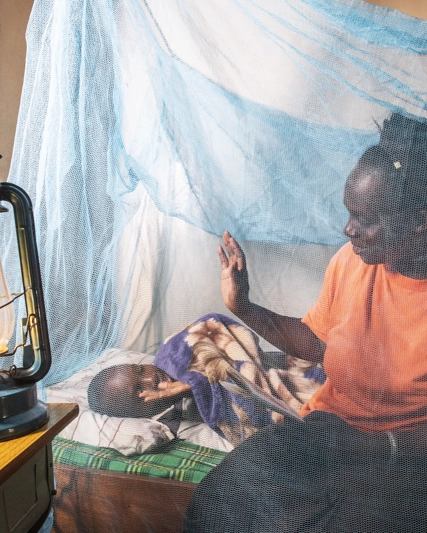Four decades of scientific innovation in HIV treatment has transformed the way patients are able to live their lives. Now, a new digital assessment tool could help improve things further by helping clinicians to identify hidden factors that can adversely impact health-related quality of life.
In the devastating early years of the AIDS epidemic, there was little hope for people diagnosed with the disease. In 1986, the average patient survived only 15 months.
Today, following incredible advances in treatments – pioneered by GSK’s HIV company ViiV Healthcare, among others – it is possible for people to live as long as those without HIV and achieve an undetectable level of the virus in the blood, which means they are unable to transmit HIV to others.
As a result, the focus of providing care has moved beyond viral suppression to improving individuals’ health-related quality of life.
Many issues potentially affect health-related quality of life including socio-economic factors, comorbidities, lifestyle, mental health, and discrimination. No two patients are the same, and it is all too common that key elements of individuals’ lives are not shared or understood by healthcare professionals. People living with HIV may feel sensitive or uncomfortable proactively discussing topics such as substance use, HIV medication worries, or physical abuse, and care providers may not have the time to explore in short appointments. As a result, opportunities for optimising patient care based on their individual needs may be missed.
This effort to improve the quality of life for HIV patients is becoming increasingly important as individuals age and become more likely to develop comorbidities. In 2023, about half of all people with HIV in the U.S. are over the age of 50. By 2030, that number could expand to about 70%.
“It’s amazing where we are today with treatment, but we will not achieve our goals if we don’t address these other issues people have that fall through the cracks,” says Jean Bacon, executive director of the Ontario HIV Treatment Network, a Canadian nonprofit which works to improve the lives of people living with HIV.
“The focus should be on all the other problems that a person is dealing with, not just the virus,” she adds.
“We need to look at the whole person.”
Untapped potential
A new initiative is exploring how those often-overlooked burdens could be highlighted. A digital, cloud-based assessment tool, known as MyPro, could help people living with HIV share their needs, preferences and circumstances that affect their quality of life ahead of their care appointments.
A clinic in Toronto, Women’s Health in Women’s Hands, part of a network of clinics in Ontario that provides care for people with HIV, was selected as the pilot site to help evaluate the new system.
The tool was developed by GSK’s ViiV Healthcare alongside partners and advisers including the Ontario HIV network, Avegen, ThinkChangeConnect and the University of Washington. It relies on patient-reported outcomes (PROs), which have been used for years in disease areas including cancer. PROs are information provided by a patient on their health condition that are not directed or explained by someone else, like a healthcare professional. These often take the form of surveys completed by the patient.
MyPro makes this data gathering process quicker and easier for healthcare professionals, and more convenient for people living with HIV. The system sends questionnaires to patients to complete before their care appointments via email or SMS, or to be completed on a tablet in a clinic waiting room. Once submitted, the information provided by the patient is autosummarised for healthcare professionals to review and use to support conversations with their patient.
Evidence suggests the use of PROs has reduced emergency room admissions and increased survival rates among cancer patients and led to better outcomes for mental health conditions. In HIV, however, the evidence for the use of PROs is more recent.
“From a doctor’s perspective, they may see a patient’s viral load is suppressed and there may be nothing visually concerning, but actually hidden from them is a layer within the patient that needs to be explored if they are to understand their quality of life and the factors that drive this,” says Duncan Short, director of global implementation science at ViiV Healthcare.
“The problem with a lot of these hidden needs is that there are barriers to those being revealed.”

Improving lives
The idea for MyPro didn’t come overnight.
In 2022 researchers at ViiV Healthcare and the University of Washington reported the findings of a study exploring the value and implementation lessons of integrating PROs into HIV clinics as part of routine care. The PROgress study was carried out at St. Michael’s Hospital in Toronto and Midway Specialty Care Clinic in Fort Pierce, Florida. It found that short surveys completed by patients on an electronic tablet before visiting their doctors raised awareness of their unmet needs, including worries over treatment adherence, mental or sexual health, and substance use.
The research also showed that the use of PROs improved communication and led to improvements in overall care.
“It gave clinicians information in the moment, when they’re actually dealing with the patient and able to do something about it,” says Bacon, who was part of a committee overseeing the study.
“Clinicians had treated these people for a long a time, and they learned things they hadn’t known before because the questions were never asked.”
The results of the study paved the way for MyPro, which is designed to collect these patient insights without disrupting the flow of care in HIV clinics – and to provide an effective system that is scalable and widely accessible to all sites.
Breaking barriers
Jeff Berry leads the Reunion Project, which brings together people who have lived with the virus for many years. He says that new tools like MyPro are essential as they make sure the voices of the aging HIV population continue to be heard and understood by clinicians.
After being diagnosed with HIV in 1989, Berry relied on a Chicago-based HIV and AIDS organisation called TPAN for support. Before people could exchange information online, sharing information in this kind of setting was “crucial to survival”, he says.
While people living with HIV are enjoying longer lives thanks to effective treatments, they still face an array of challenges – including facing negative attitudes and misconceptions about HIV and how it is transmitted.
These attitudes, which largely emerged during the AIDS epidemic in the 1980s, range from beliefs that only certain groups of people can acquire HIV, to feelings that people deserve to get HIV because of their life choices.
Berry recalls one particularly poignant example of this at a Reunion Project meeting organised in Birmingham, Alabama in early 2023. A gay Black man stood up and disclosed for the first time that he was living with HIV. The man had kept his HIV status a secret for the last 38 years.
“As much as we’d like to think we’ve advanced beyond these attitudes over the last 40 years, in some ways they are just as bad or even worse than they were,” Berry says. “All these layers of stigma are huge barriers to living a life free of those burdens.”
Global HIV priorities are also shifting to reflect these barriers. Compared with previous goals, the UNAIDS targets for 2025 (PDF - 641KB) put more emphasis on addressing stigma and discrimination, which can include the denial of health or social services, loss of employment opportunities, and physical abuse.
Collecting patient-reported data through MyPro could be key to meeting these targets by giving people living with HIV a simple and effective way of communicating an array of issues, including stigma and discrimination they may be facing, to healthcare professionals, who may be able to take action, and tailor their treatment plans based on their specific needs.

Future hope
Meanwhile, scientists at ViiV Healthcare and other companies continue their relentless quest to develop new medicines that may prevent new HIV diagnoses and treat people living with HIV that are designed with quality of life in mind.
Long-acting medicines, for example, could give patients the option of doing away with daily routines that can prove challenging for some to maintain.
Researchers are utilising innovative techniques such as gene editing and immune modulation – permanently changing the immune system to better fight HIV – in search of new interventions.
The lightning-fast creation of the Covid-19 vaccine also opened up the possibility of using mRNA technologies on other diseases, including HIV. A vaccine for HIV has long proved difficult to develop due to the complex nature of the virus, which becomes part of the human genome just 72 hours after transmission.
In the meantime, tools like MyPro could help healthcare professionals work out the most suitable and convenient treatment plans for patients that are available to them now – and in the future.
“HIV has changed significantly from being a death sentence in the 1980s,” Short concludes.
“The whole mindset is different so that now it’s very much about treating more than viral suppression and looking to improving an individual’s quality of life.
“Understanding a person’s needs, behaviours, circumstances and preferences are all important aspects of this and I see PROs – including the MyPro tool – as a really valuable means of achieving this.”




